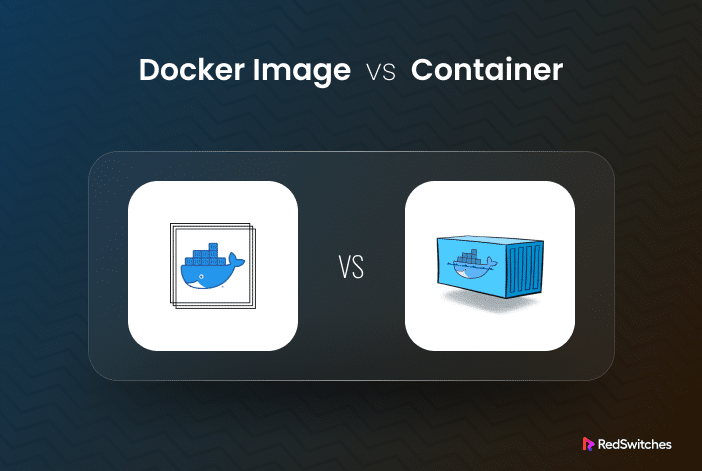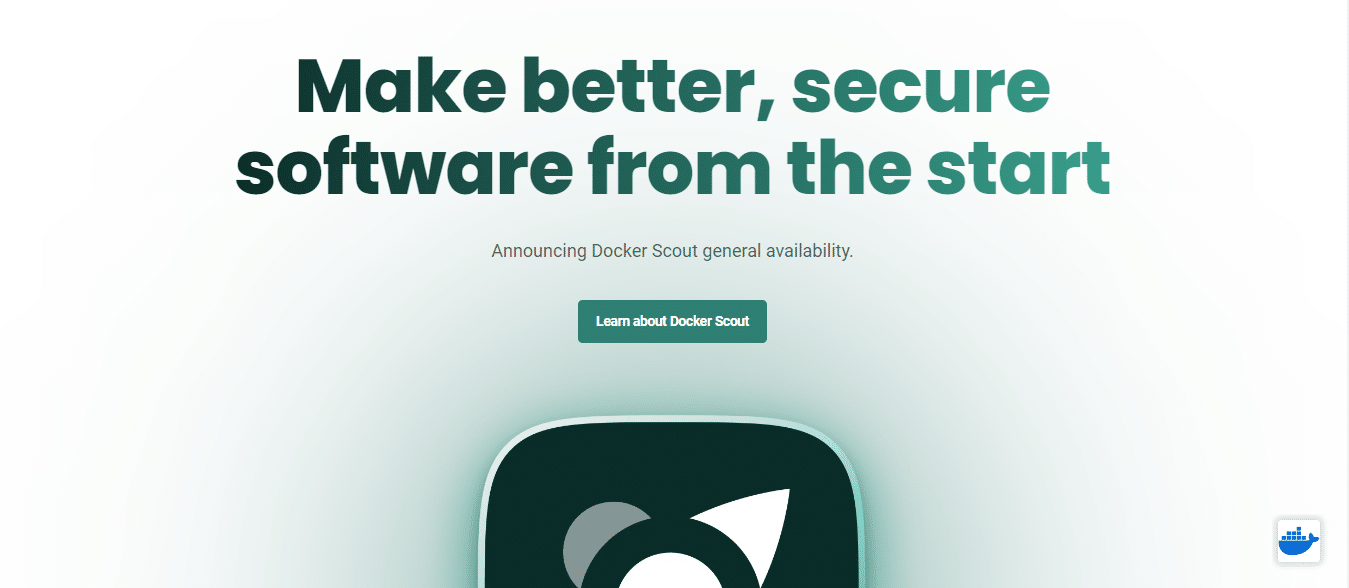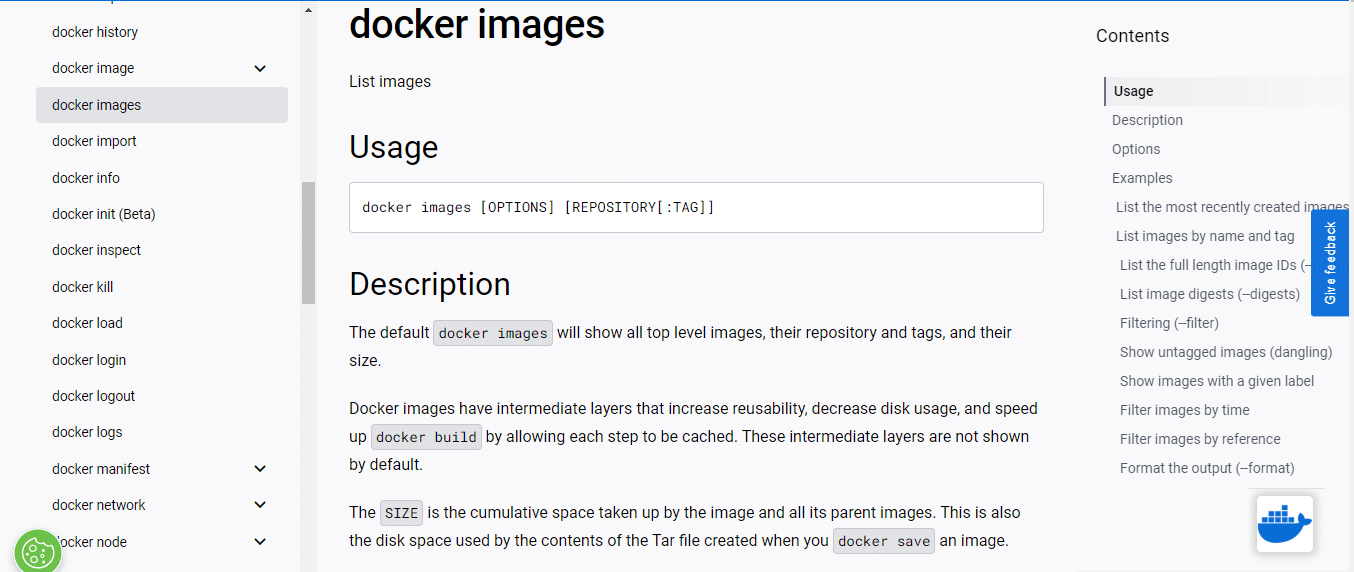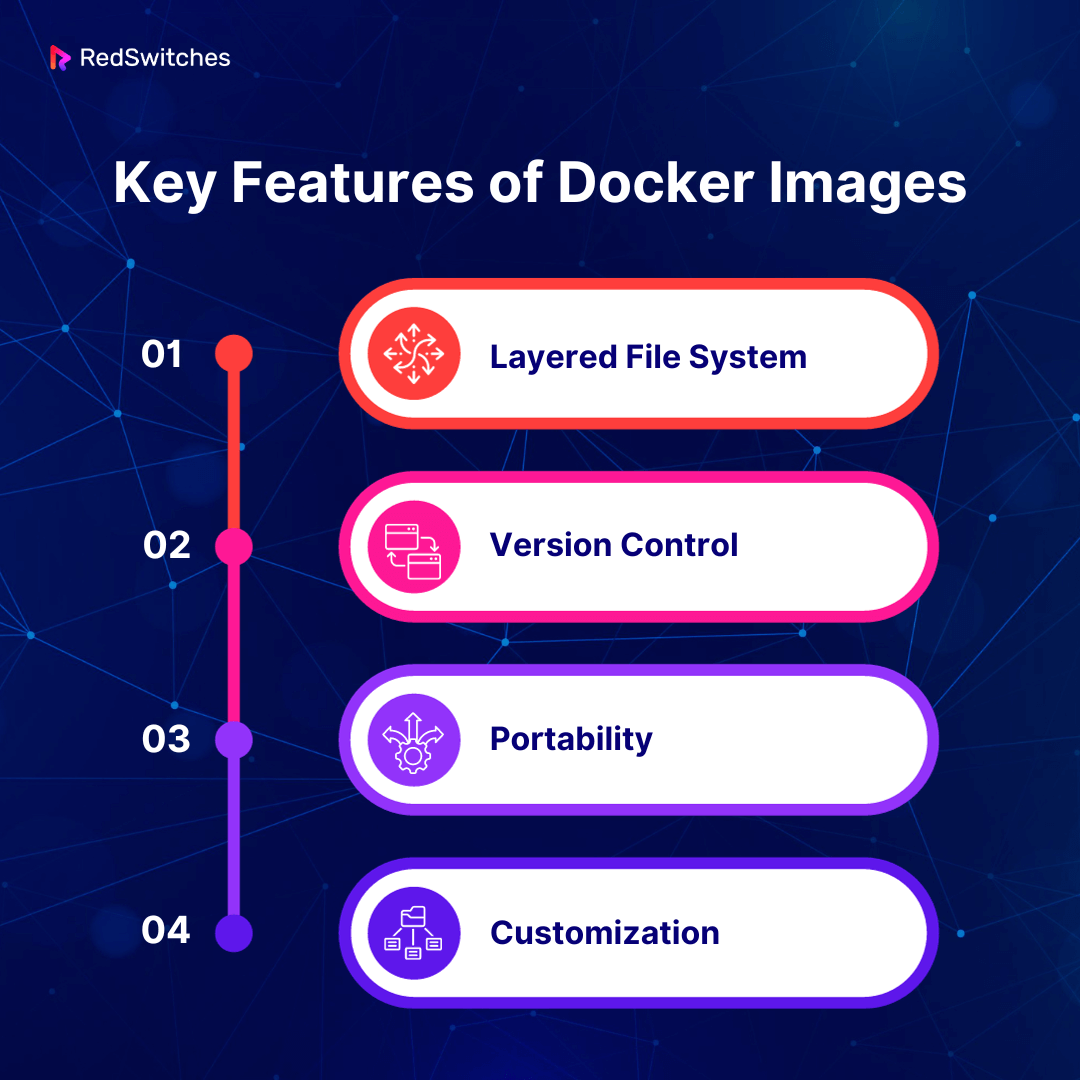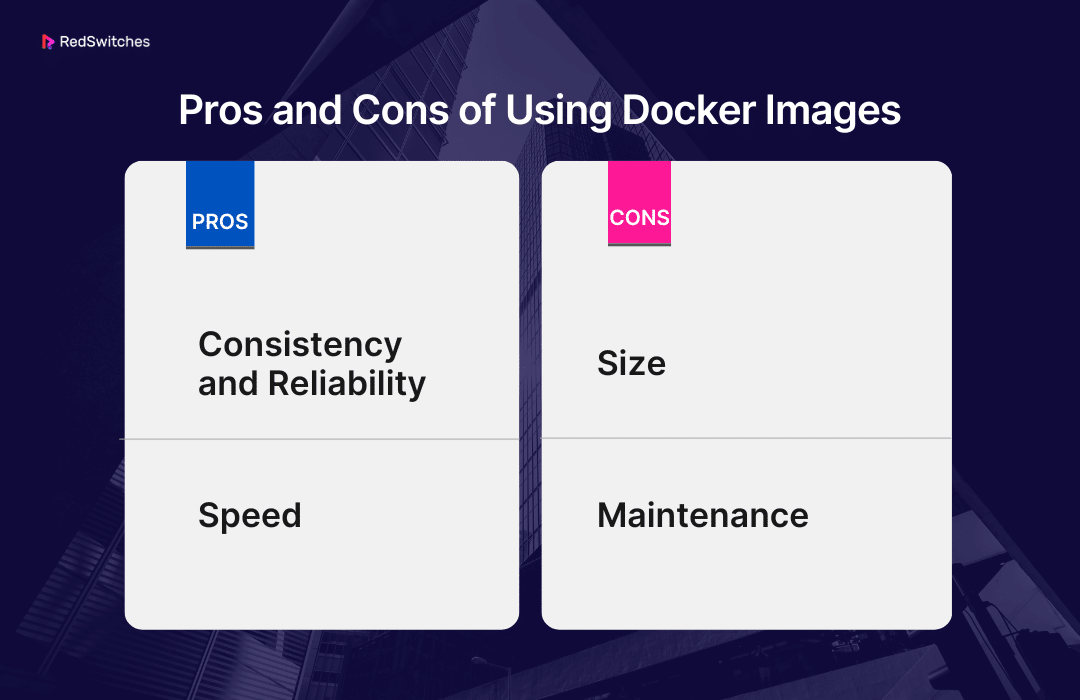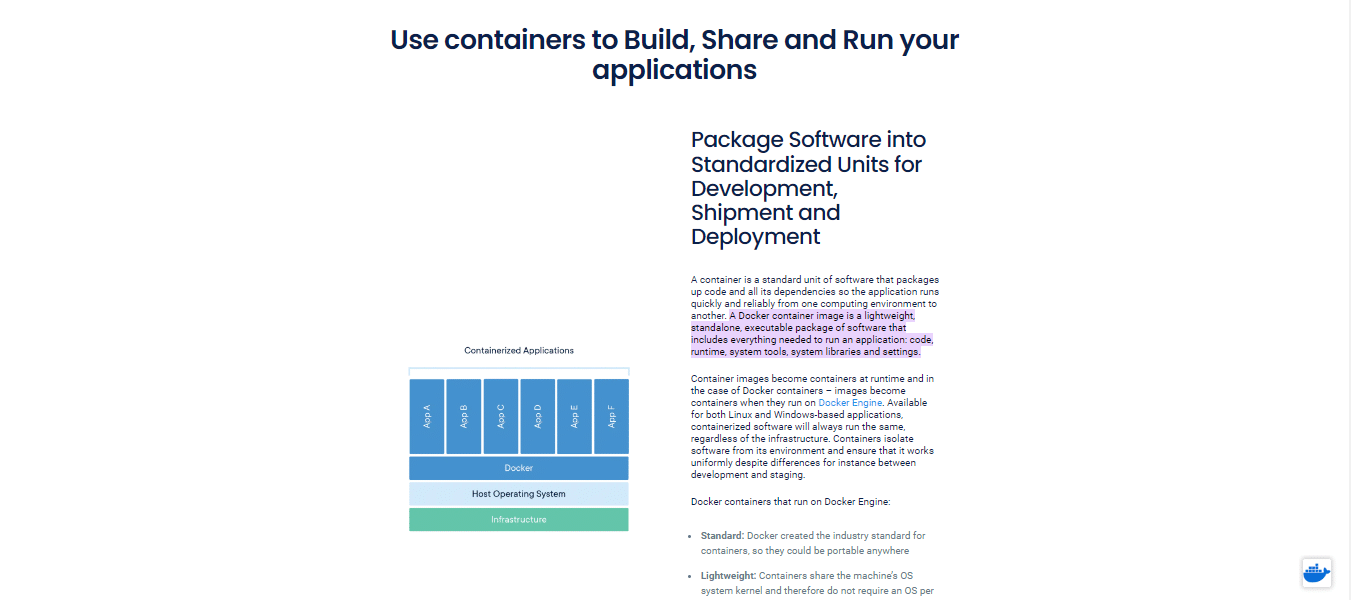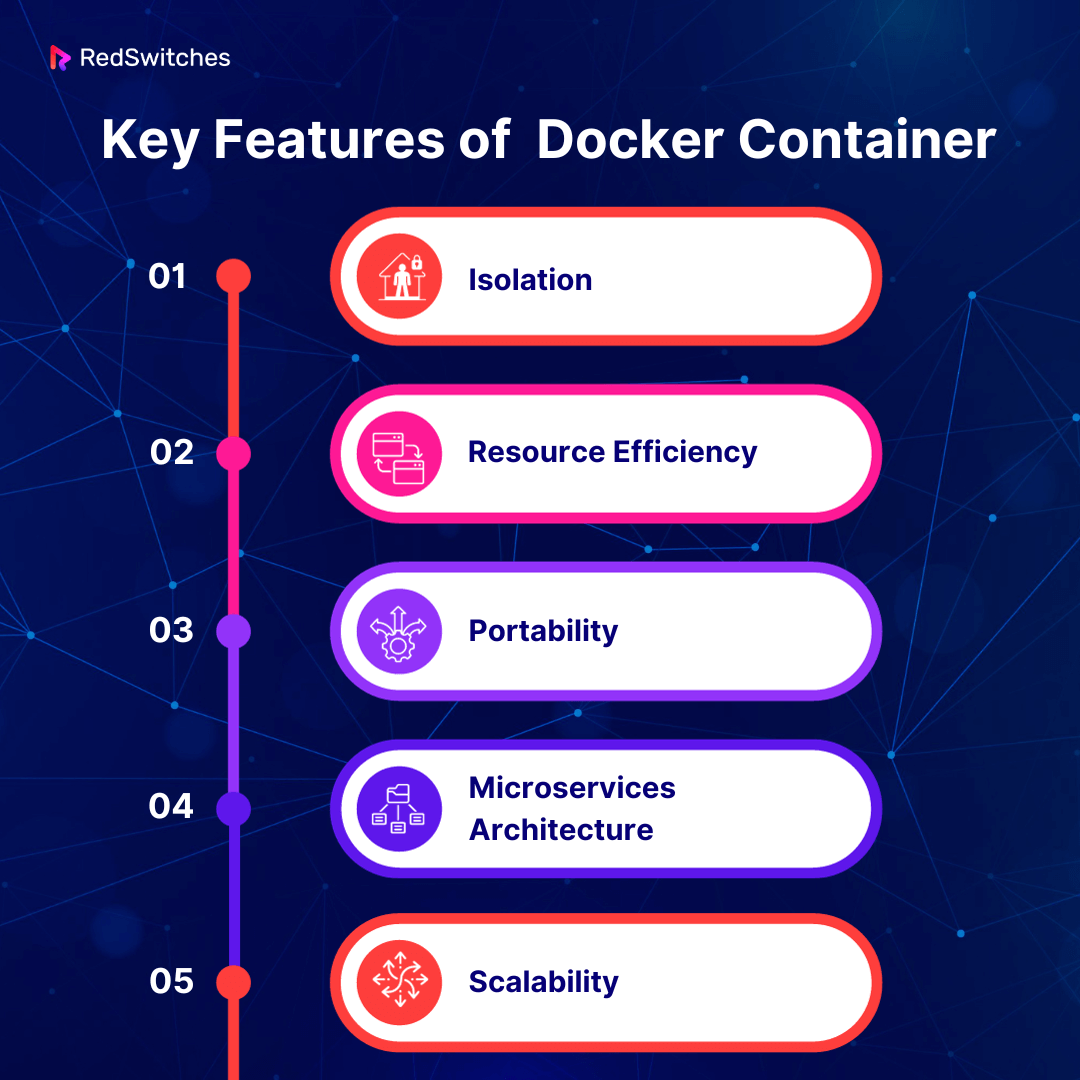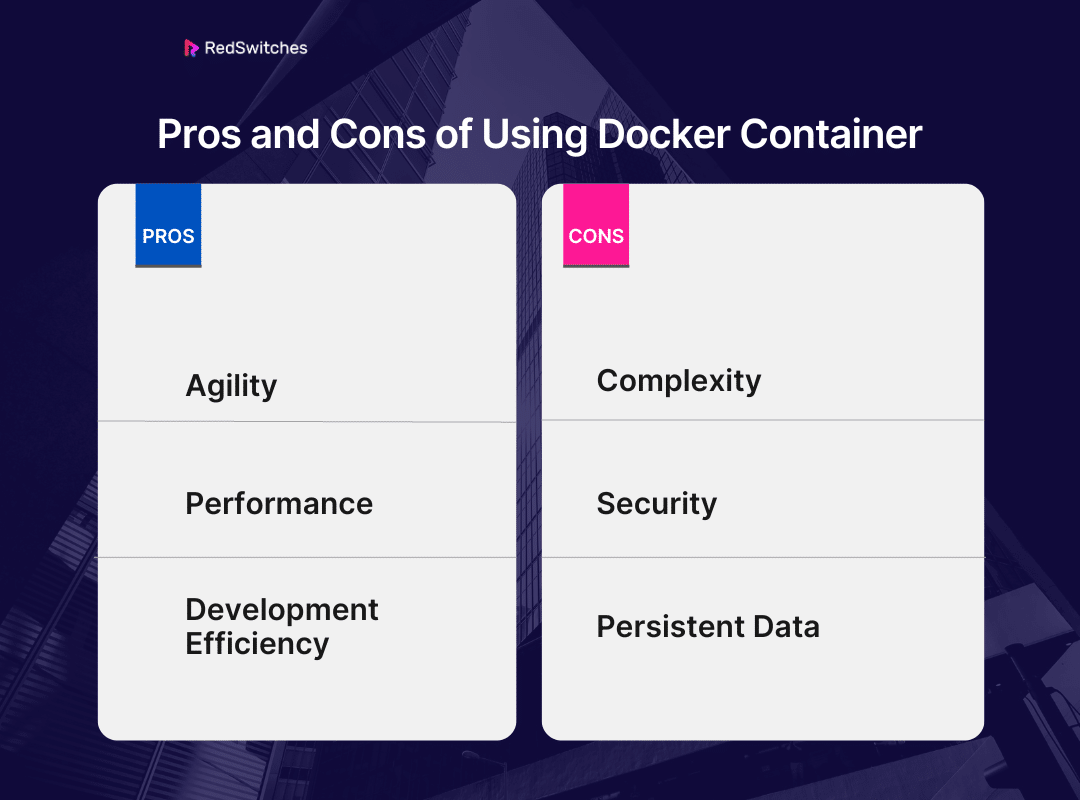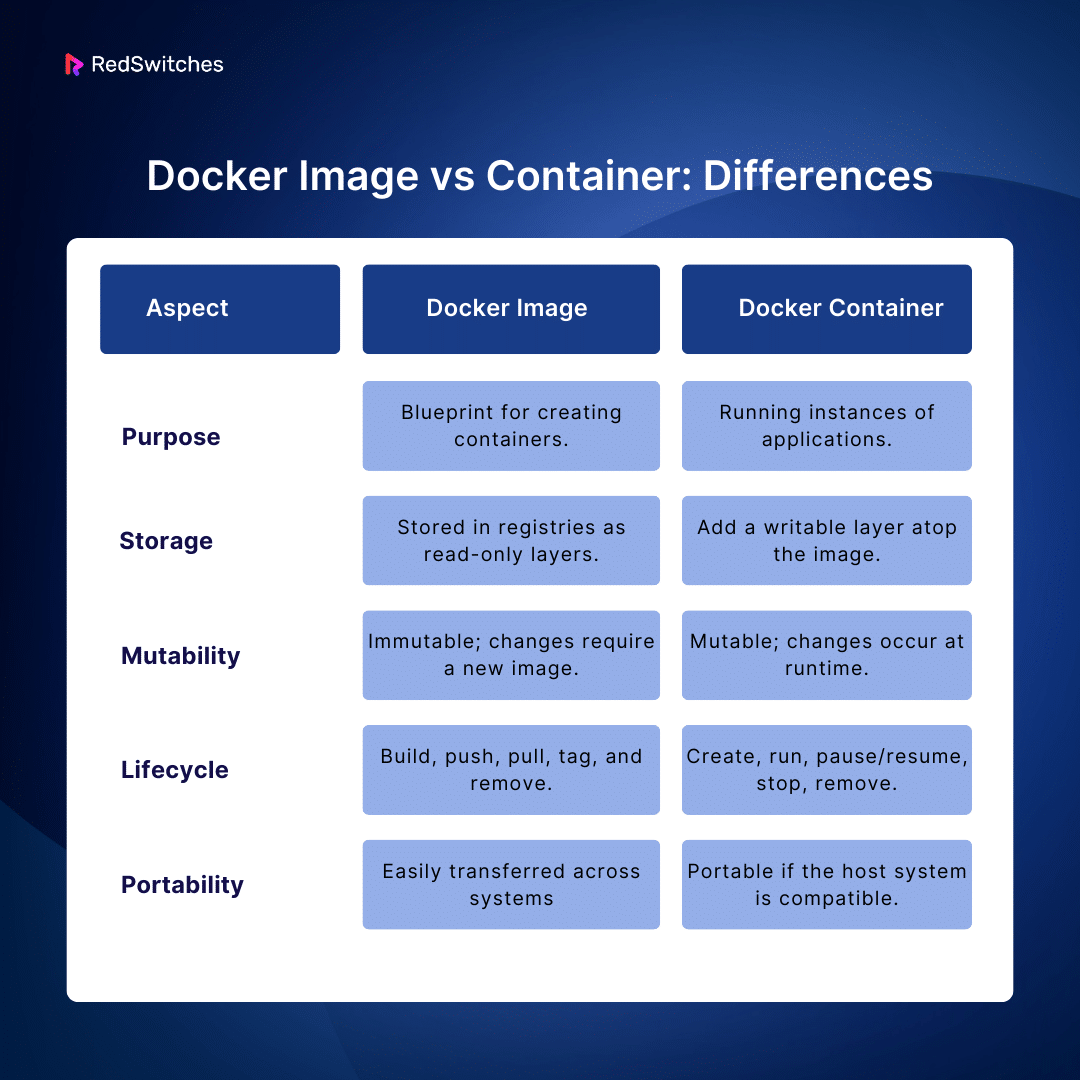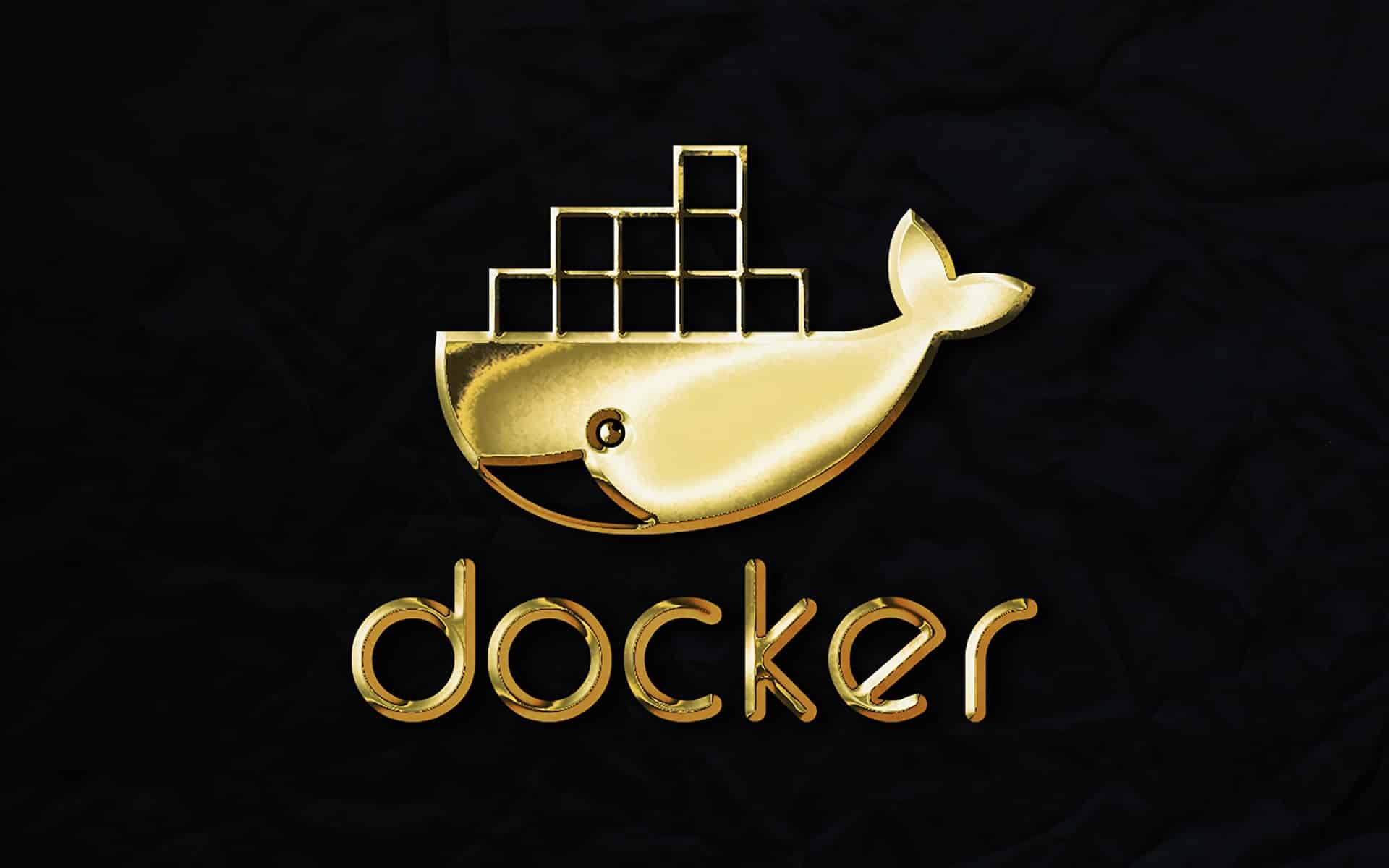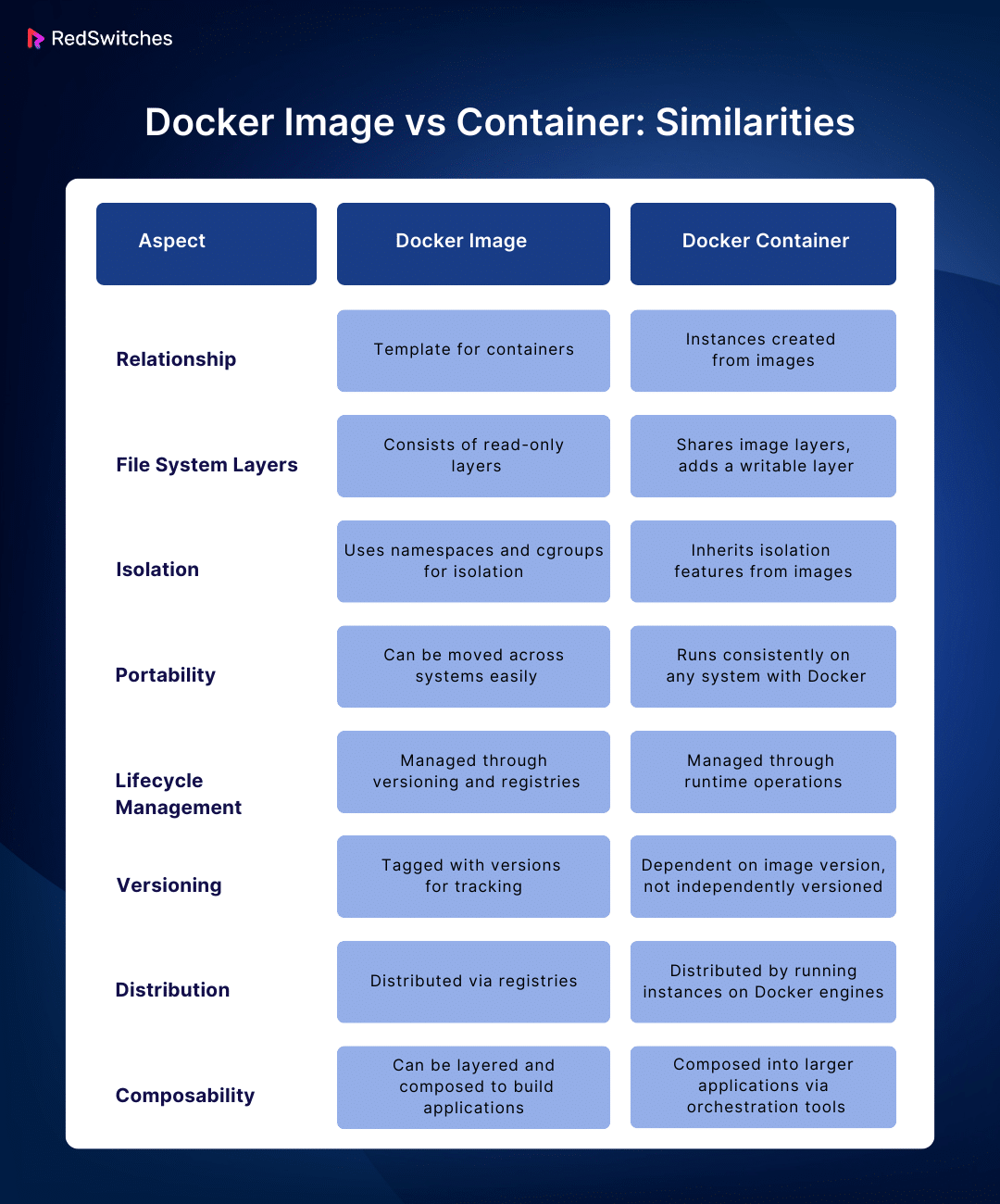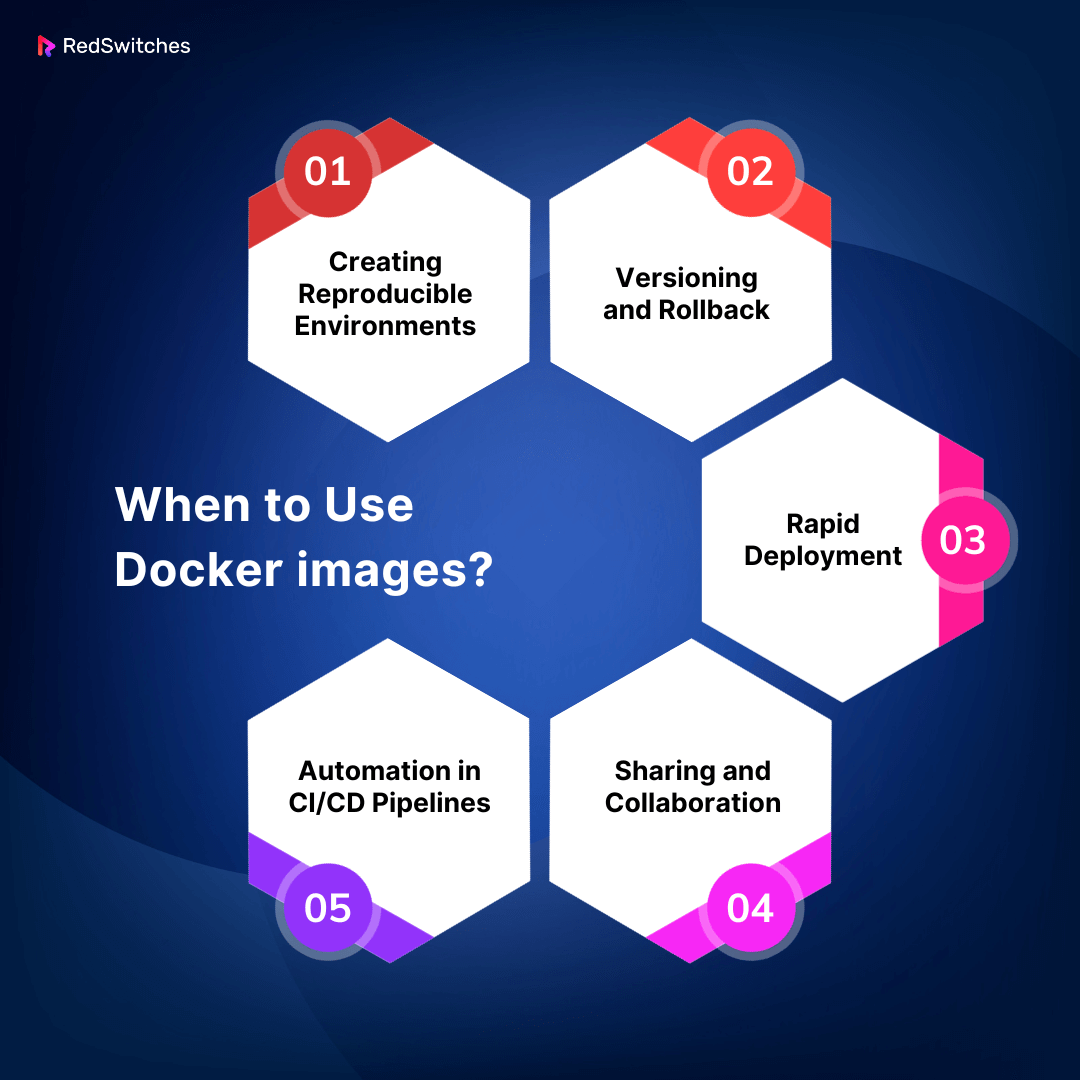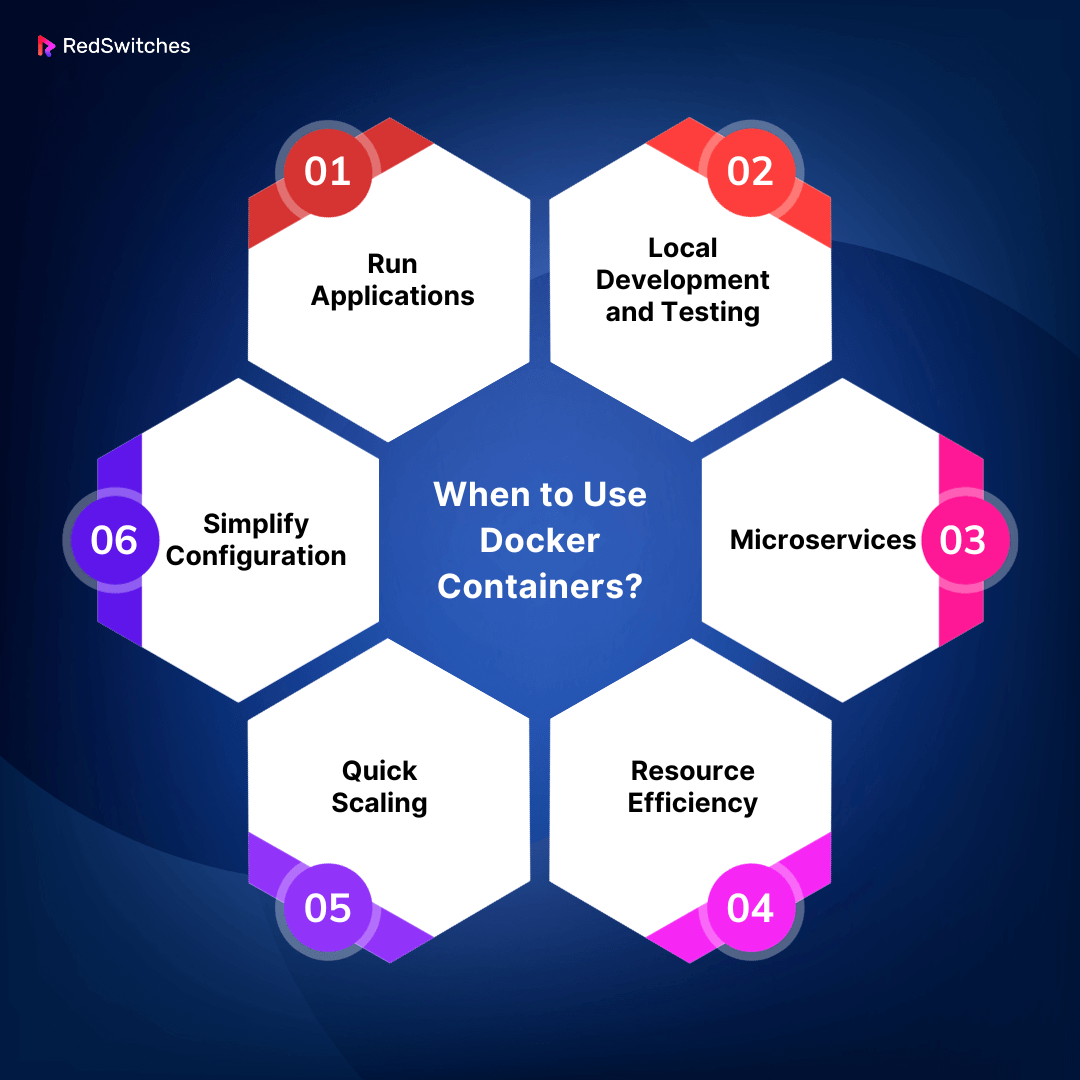Navigating the intricate world of Docker demands a clear understanding of its fundamental components: Docker Images and Containers. These terms are more than just jargon; they represent the core concepts that drive Docker’s powerful containerization platform.
This article offers a concise yet comprehensive examination of the ‘Docker Image vs Container’ dichotomy, tailored for professionals seeking to refine their technical prowess. We will uncover the unique attributes of the static Docker Image and the dynamic Container, elucidating their critical roles in streamlining software deployment.
Join us as we distill the essence of Docker’s architecture, enhancing your mastery of containerization with a focused exploration of its primary elements.
Table of Contents
- What Is Docker?
- What are Docker Images?
- What is a Docker Container?
- Docker Images vs Container: Key Differences
- Docker Images vs Container: Similarities
- When to Use Docker Images?
- When to Use Docker Containers?
- Conclusion
- FAQs
What Is Docker?
Credit: Docker
Docker is an open-source platform that automates the deployment of applications inside lightweight, portable containers. It encapsulates an application with its environment, dependencies, and libraries, ensuring consistency across multiple development, testing, and production environments.
Want to clear the clutter from your Docker system? Read Our Ultimate Docker Cleanup Guide and streamline your Docker system today.
What are Docker Images?
Credit: Docker Images
Docker images are the blueprints of Docker containers containing all the necessary components to run an application. They are immutable files that start a container.
Key Features of Docker Images
- Layered File System: Docker images are built up from a series of read-only layers, which makes image downloads faster and file sharing more efficient.
- Version Control: Images can be versioned, which allows you to track changes, roll back, and manage images with ease.
- Portability: Once created, images can be pushed to a Docker registry and shared across different teams and environments.
- Customization: Users can build custom images or modify existing ones according to their project needs.
Pros and Cons of Using Docker Images
Pros:
- Consistency and Reliability: Ensure your application operates similarly across all environments.
- Speed: Images include application code and dependencies, reducing the setup time traditionally required when deploying software.
Cons:
- Size: Some images can be large, leading to longer download times and more disk space consumption.
- Maintenance: Requires regular updates to address vulnerabilities in the image’s layers and underlying operating system.
Understanding Docker and its vital component — Docker Images — is foundational for modern software deployment strategies. Docker Images are vital in application distribution’s consistency, efficiency, and portability.
What is a Docker Container?
Credit: Docker Container
A Docker container is a lightweight, standalone, executable package that includes everything needed to run a piece of software, including the code, runtime, system tools, libraries, and settings. Containers isolate software from its environment and ensure it works uniformly despite differences between development and staging.
Key Features of Docker Container
- Isolation: Containers provide secure isolation of your applications, ensuring one container does not interfere with another.
- Resource Efficiency: Containers share the host system’s kernel and consume fewer resources than traditional or virtual machine environments.
- Portability: Containers can run on any Docker system installed, regardless of the underlying infrastructure.
- Microservices Architecture: Ideal for microservices architecture as you can isolate and manage services independently.
- Scalability: Containers can be easily scaled up or down by creating new containers or deleting existing ones.
Pros and Cons of Using Docker Container
Pros:
- Agility: Containers can be started, stopped, and deployed quickly and easily, ideal for continuous integration and continuous deployment workflows.
- Performance: Containers require fewer hardware resources, allowing more applications to run on the same hardware than VMs.
- Development Efficiency: Promotes separation of concerns in application development and a cleaner, more modular design.
Cons:
- Complexity: Managing and orchestrating many containers can become complex without proper tools.
- Security: Containers share the same kernel, so a vulnerability in the kernel can potentially compromise all containers.
- Persistent Data: Containers are ephemeral, posing challenges for storing and managing persistent data.
Docker containers revolutionized the software deployment world by abstracting the complexities of dependency management and providing a unified environment for application delivery. While they offer numerous benefits regarding efficiency and scalability, they also present challenges that need to be managed with additional tooling and careful architecture design.
Future-proof Your Docker Skills! Master Containerization with Our Quick 2024 Guide.
Docker Images vs Container: Key Differences
When delving into the world of Docker, it’s easy to see Docker Images and Containers mentioned in tandem. Yet, they serve distinct purposes within the Docker ecosystem. To harness the full potential of Docker’s capabilities, it is essential to understand how these two components differ and complement each other in the application deployment pipeline.
In this section, we will embark on a journey to unravel the specific roles that Docker Images and Containers play, pinpointing the unique characteristics that set them apart.
Purpose
The concepts of Docker images and containers are cornerstones of Docker technology. They are often mentioned together but have fundamentally different purposes within the containerization ecosystem. Understanding the “Docker image vs container” distinction is essential for anyone working with Docker.
Docker Image
- Blueprint for Containers: A Docker image is a template for creating a container packing the application and its environment.
- Immutable Artifacts: Once created, images remain unchanged, promoting consistency and reliability across deployments.
- Application Packaging: They encapsulate the application’s code, runtime, system tools, and libraries for simplified delivery.
Key Purposes:
- Consistency: Ensure the same setup across different environments, from development to production.
- Portability: Facilitate easy and consistent deployments across diverse infrastructures, such as physical, virtual, or cloud environments.
Docker Container
- Execution Environment: Containers provide the runtime environment for applications instantiated from Docker images.
- Isolation: They create secure, isolated application environments, avoiding conflicts and ensuring resource dedication.
- Operational Efficiency: Leverage the host OS kernel for better resource management, making containers lightweight and fast.
Key Purposes:
- Resource Management: Containers are more resource-efficient than VMs, consuming fewer system resources and booting faster.
- Scalability: They can be scaled up or down rapidly, enabling flexible responses to workload changes.
Docker images and containers differ in their lifecycle and function: images are static templates for creating containers, which are dynamic and executable application environments. While a Docker image serves as the immutable foundation, a Docker container utilizes that foundation to operate in a mutable, live state. Understanding this container vs image Docker relationship is pivotal for effective container management and deployment strategies.
Storage
Credit: Freepik
Understanding Docker images and containers’ storage mechanisms and purposes is crucial when navigating the “docker image vs container” paradigm. These components handle storage distinctly, reflecting their roles in the Docker ecosystem.
Docker Image Storage
- Centralized Storage: Images are maintained in a Docker registry, a repository system for storing and distributing Docker images.
- Immutable Layers: Stored as immutable, read-only layers built incrementally to form the image.
- Efficiency: Layered storage makes images efficient to store and share, as only differential data between layers are transmitted.
- Consistency and Reproducibility: Images ensure consistent environments and allow for exact replications across different Docker hosts.
- Version Control and Rollback: The immutable nature of images facilitates version control and quick rollback if needed.
- Secure Distribution: Registries can implement security measures to verify unaltered images.
Docker Container Storage
- Writable Layer: Containers introduce a writable layer above the read-only image layers to capture all runtime changes.
- Ephemerality: This layer is transient and only exists while the container runs, making containers inherently ephemeral.
- Runtime Modification: The writable layer allows for necessary runtime changes, such as application state and user data.
- Data Persistence: Docker volumes are used with containers to persist data beyond the container’s lifecycle.
Storage Implications for Docker Image vs Container:
- Read-Only vs Writable: Images are static and read-only, designed for distribution, while containers are dynamic, allowing for modifications during runtime.
- Efficiency vs Flexibility: Image layers promote storage efficiency; container layers provide the flexibility needed for running applications.
- Lifecycle Management: Storage drivers play a critical role in managing the lifecycle of both images and containers, affecting performance and scalability.
In conclusion, the “difference between Docker image and container” in storage reflects their intended purpose: images for the secure and efficient distribution of applications and containers for the dynamic execution and management of these applications. Docker’s storage drivers underpin these functionalities, ensuring optimal storage and management across the platform.
Mutability
The concepts of mutability in Docker images and containers are central to understanding their functionalities and the “docker image vs container” dynamic. Mutability defines whether these components can be changed after their creation, which is critical in their respective use cases within Docker.
Docker Image Mutability
- Immutable by Design: Docker images are immutable, meaning any modification requires the creation of a new image.
- Consistent Deployments: This ensures that every container instantiated from an image is identical, providing a reliable and consistent deployment environment.
Implications for Docker Images:
- Reproducibility: The same image can reliably reproduce containers, which is crucial for testing and production environments.
- Sharing: Due to their immutability, images can be shared across teams and systems without variations in configuration or setup.
Docker Container Mutability
- Mutable Instances: Docker containers are mutable, allowing changes to be made on the fly during runtime.
- Writable Layer: Modifications are stored in a writable layer that sits on top of the image’s read-only layers.
Implications for Docker Containers:
- Flexibility: Containers can be adjusted as needed, allowing for dynamic configuration changes and data manipulation.
- Isolation: Modifications to a container are isolated, ensuring that changes do not impact other containers or the host system.
- Ephemerality: Unless persisted via Docker volumes, container changes are not saved when the container is stopped or destroyed.
Choosing Between Images and Containers
- For Consistency: Opt for images when the goal is to maintain uniform environments across different stages of the development pipeline.
- For Flexibility: Choose containers when the task requires runtime modifications, such as in development or testing scenarios.
The “docker container vs docker image” comparison reveals a clear distinction: images are the unchangeable blueprints for creating flexible and modifiable container instances. This understanding is vital for anyone looking to leverage Docker for application management and deployment, ensuring the right balance between stability and adaptability in their workflows.
Lifecycle
The lifecycle of Docker images and containers outlines their stages from inception to their eventual removal. Recognizing these stages for docker image vs container is pivotal for adeptly orchestrating Docker’s application management and deployment capabilities.
Docker Image Lifecycle
- Build: Initiated with a Dockerfile, the build process compiles the image layers, sets up the necessary environment, and installs software.
- Push: The built image is then pushed to a Docker registry, ready for storage and distribution.
- Pull: Images can be pulled to a local Docker environment for deployment or further development.
- Inspect: Inspection of an image reveals its layers, metadata, and configuration, which are crucial for validation and understanding.
- Tag: Tagging facilitates version control and differentiation between image iterations.
- Remove: Unneeded images can be purged from the local environment to conserve resources and maintain order.
Docker Container Lifecycle
- Create: Containers are instantiated from images, inheriting the image’s layers and adding a writable layer.
- Run: A container runs the encapsulated application, processing commands and user interactions.
- Pause/Resume: Containers can be paused to free resources and later resumed to continue operations from the same state.
- Stop: Stopping a container halts its processes, releases resources, and retains its state for later use.
- Restart: Restarting a container resumes its activity, using the preserved state from when it was stopped.
- Remove: Finally, containers can be permanently removed, deleting their writable layer and state.
Comparing Image and Container Lifecycles
- Immutability vs Mutability: Docker images are immutable blueprints, whereas containers are mutable instances of these blueprints.
- Blueprint vs Execution: Images serve as the static template for containers, which are dynamic, runnable entities.
- Persistence vs Ephemerality: While images are stored persistently in registries, containers are temporary and lose their transient changes unless specifically saved.
- Initial vs Current State: Images encapsulate the initial setup of an application, while containers reflect the ongoing state of a running application instance.
In the “docker image vs docker container” discussion, it’s clear that images are the foundation for creating consistent and reproducible environments, and containers provide the operational instances that bring applications to life with the flexibility of runtime changes. Understanding their distinct lifecycles is essential for effective Docker utilization, ensuring that each component fulfills its role efficiently in the containerization process.
Portability
The portability of Docker images and containers is a crucial benefit of Docker technology, yet it varies, affecting how they are utilized across different computing environments.
Docker Image Portability
Docker images boast exceptional portability, which stems from the following:
- Standardized Formats: Using standards like the OCI Image Format ensures Docker-compatible systems can run Docker images.
- Consistent Deployments: They guarantee the same deployment outcome on any system, from personal computers to cloud servers.
- Simplified Deployment: Encapsulating dependencies and configurations reduces the complexity of deployment.
- Streamlined Workflows: Developers can share Docker images, ensuring consistency in development environments.
Docker Container Portability
Containers maintain a degree of portability under certain conditions:
- Host System Compatibility: Containers enjoy portability across similar host systems, particularly within the same OS family.
- Runtime Environment: A compatible container runtime is required to function across different systems.
Factors Influencing Container Portability
- OS Compatibility: Containers share the host OS kernel, so the portability is contingent upon OS compatibility.
- Runtime Requirements: The need for a compatible container runtime can limit the environments where a container can run.
- Dependencies: Application-specific dependencies on hardware or software may restrict container portability.
In the “docker image vs container” comparison, images are inherently portable, offering consistent and streamlined deployments across various platforms thanks to standardized formats.
Containers, while portable, are subject to compatibility constraints of the host system and runtime environment. By understanding these nuances and employing best practices to enhance portability, developers can leverage the full potential of Docker for seamless application deployment and management across diverse infrastructures.
Command Your Containers! Discover Six Key Docker Run Scenarios to enhance your Docker prowess.
Here is a breakdown of differences between docker image vs container.
Docker Images vs Container: Similarities
Credits: Unsplash
While Docker images and containers are distinct in their purpose and functionality within the Docker ecosystem, they also share several fundamental similarities to Docker’s approach to containerization. In this section, we will explore the common ground that both images and containers share, enabling Docker to provide developers and system administrators with a seamless and efficient workflow.
Relationship
In the Docker ecosystem, the relationship between Docker image vs container is often likened to blueprints and buildings — one delineates the plan. At the same time, the other represents the realization of that plan.
Docker Image: The Blueprint
- Template for Containers: A Docker image is the immutable template from which a container is created, much like a blueprint is to a house.
- Consistent Deployment: It ensures that every container spun from it reflects the same setup, dependencies, and application state.
Docker Container: The Built House
- Running Instance: A Docker container is an image’s live, mutable instance, analogous to a house built from its blueprints.
- Unique State: Containers maintain their state and data, allowing for isolated execution of applications.
Core Similarities
- Shared Base: Both images and containers are built on the same Docker platform, utilizing Docker’s capabilities for container management.
- Standardization: Adherence to standardized formats across images and containers facilitates their portability and usability.
- Reproducibility: The ability to replicate environments from images to containers is a cornerstone of Docker’s utility.
- Version Control: Docker images and containers benefit from versioning, allowing consistent tracking and management of changes.
Relationship Dynamics
- From Creation to Execution: Docker images are created via Dockerfiles and instantiated into containers with commands like docker run.
- Lifecycle Management: Containers are managed through Docker commands, controlling their execution, pausing, and termination.
- Updating and Evolution: Changes to Docker images result in new versions, which can then be pulled and run as updated containers.
In Practice
- docker build: Developers use this command to create Docker images based on the instructions in a Docker file.
- docker run: This command creates a container from a Docker image, starting the application.
- docker stop/start: These commands are employed to manage the operational state of Docker containers.
The “docker image vs container” relationship is integral to Docker’s application deployment and management approach. Images are the immutable blueprints for containers, which are their mutable, executable forms. Together, they provide a reliable and standardized system for deploying applications, embodying the plan and its execution within the Docker ecosystem.
Ready to Dockerize Your Ubuntu? Follow Our Step-by-Step Guide to Installing Docker and get up and running quickly!
File System Layers
Docker image vs container is built on a standard file system structure that utilizes a layered approach, a critical feature that enhances Docker’s storage efficiency and optimization.
Layering Concept in Docker
- Transparent Layering: The file system of Docker is like a stack of transparent sheets, each layer representing a change or addition.
- Base and Incremental Layers: The operating system layer is at the base, upon which additional layers for dependencies and applications are placed.
Docker Image Layers
- Read-Only Blueprint: Docker images consist of read-only layers that form the blueprint for containers. These immutable layers encapsulate everything the application needs to run.
Docker Container Layers
- Writable Top Layer: Containers add a writable layer on top of the image layers, allowing runtime changes without affecting the base image.
Docker Image vs Container: Practical Layering
- Immutable vs Mutable: Docker images provide immutable layers, while containers add a mutable layer for active use.
- Docker commit: This command exemplifies the relationship where changes in a container can create a new image layer.
Credit: Freepik
With its efficient layering, the shared file system structure of Docker images and containers underscores the Docker image vs container relationship. This foundational design enables Docker to deliver on its promises of efficiency, portability, and reproducibility, making it a vital concept for users to grasp for effective container management.
Isolation
A defining feature of Docker’s approach to containerization is the isolation provided by both Docker images and containers. This isolation is a fundamental aspect of the Docker platform, ensuring that applications run in a predictable and controlled environment.
Isolation in Docker
- Independent Environments: Docker allows each container to operate in an isolated space, providing the security and stability of separate environments on a single host system.
Docker Image Isolation
- Immutable Snapshots: Images are immutable snapshots that define the environment of a container. They are isolated in that each image is independent of others and can be used to create isolated container instances.
- Consistent Runtime: By using Docker images, you’re guaranteed that your application runs in the same environment, regardless of where the container is deployed, thus isolating deployment environments.
Docker Container Isolation
- Runtime Segregation: Containers extend the isolation by segregating applications at runtime. Each container interacts with its own set of dependencies as specified by the image, separate from the host and other containers.
- Resource Limits: Docker containers can apply resource constraints, isolating and preventing containers from consuming too many host resources.
Docker Image vs Container: Implementing Isolation
- Docker Networks: Docker creates separate container networks, isolating network traffic.
- Volumes: Data persistence in Docker is managed through volumes isolated from the container’s writable layer and securely shared among containers or with the host.
Isolation is a crucial similarity between Docker images and containers, embodied in their design and operation. Docker images provide the blueprint for isolated environments, while Docker containers bring these environments to life, maintaining isolation during execution.
This isolation is crucial for maintaining the integrity and security of containerized applications, highlighting the “docker image vs container” synergy in maintaining app isolation across the development and deployment pipeline.
Portability
Portability is a crucial attribute of Docker, facilitated by the platform’s containerization approach. Both Docker images and containers benefit from a high degree of portability across various computing environments.
Portability with Docker Images
- Standardized Format: Docker images are built into a standardized format, making them easily transferable across any Docker system, irrespective of the underlying infrastructure.
- Registry Ecosystem: Images are stored in Docker registries, such as Docker Hub, which can be accessed and pulled down to any Docker environment, enhancing portability.
Portability with Docker Containers
- Consistent Runtime: Containers run the same regardless of the host environment, thanks to the consistent runtime provided by Docker images.
- Host Agnostic: Docker containers can be executed on any host that supports the Docker engine, from a developer’s laptop to a production server in the cloud.
Implications of Portability in Docker
- Streamlined CI/CD: Continuous integration and deployment processes are simplified as Docker images and containers can be seamlessly moved across different pipeline stages.
- Developer Productivity: Developers can easily share their work, knowing it will run the same way on a colleague’s machine as theirs.
- Hybrid Cloud Adaptability: Docker’s portability suits hybrid cloud strategies well, allowing containers to shift between on-premises and cloud environments.
The portability of Docker images and containers is a defining feature that sets Docker apart in the containerization space. It allows for a “build once, run anywhere” approach, which is crucial in today’s diverse and distributed computing landscapes. This “docker image vs container” aspect ensures that applications packaged as Docker containers can be deployed consistently, regardless of the environment, simplifying development and operations across the board.
Take Your Mac to the Next Level! Read Our Comprehensive Guide for Developers on Installing Docker on Mac and unlock the full potential of containerization.
Lifecycle Management
Lifecycle management within Docker encapsulates the processes that govern the creation, deployment, and termination of Docker images and containers. Both share a lifecycle management process that ensures smooth operation and maintenance of containerized applications.
Lifecycle of Docker Images
- Creation: Begins with a Dockerfile, which outlines the environment and instructions to build the image.
- Versioning: Images are tagged with version numbers to manage different releases of an application.
- Storage: Once created, images are stored in a Docker registry, ready for deployment.
- Updates: Images are updated by changing the Dockerfile and rebuilding, which creates a new image version.
Lifecycle of Docker Containers
- Instantiation: Containers are created from Docker images and start their lifecycle as running instances of these images.
- Execution: Containers are started, stopped, and restarted, managing the application’s operational state.
- Monitoring: The health and performance of running containers are monitored continuously.
- Decommission: Containers can be stopped and removed when no longer needed, while their images remain in the registry for reuse.
Shared Aspects of Lifecycle Management
- Immutability and Mutability: Images remain immutable post-creation, while containers can be modified at runtime.
- Dependency on Docker Engine: Both rely on the Docker engine for their lifecycle operations, from image building to container execution.
- Automation: Docker’s lifecycle can be automated with orchestrators like Kubernetes, which manage container lifecycles at scale.
Tools and Commands
- docker build/push/pull: Commands used to manage the lifecycle of Docker images from creation to distribution.
- docker run/stop/rm: Commands that handle the operational state of Docker containers.
Lifecycle management is a critical component of the “docker image vs container” framework, ensuring that images and containers are efficiently created, maintained, and disposed of. Docker’s built-in tools and third-party orchestrators streamline these processes, fostering a robust and scalable environment for development and operations teams.
Versioning
Versioning is a fundamental aspect of the Docker ecosystem, allowing for precise control and management of the changes that occur over the lifetime of Docker images and containers. It plays a crucial role in maintaining stability and traceability in the deployment of applications.
Versioning in Docker Images
- Tagging System: Docker images use tags to mark different versions of an image. Tags correspond to specific iterations of an image, which could represent incremental changes, different configurations, or environment-specific variations.
- Immutable Versions: Once an image is built and tagged, that version of the image remains immutable. Any changes require creating a new tagged image, ensuring that previous versions remain intact and accessible.
- Registry Tracking: Docker registries keep track of different image versions, allowing teams to pull specific versions for rollback or comparison purposes.
Versioning in Docker Containers
- Instance Specific: While containers are not versioned, they are instances of a specific version of an image. Each container retains the version information of the image it is based on.
- Runtime Changes: Any changes made at runtime to a container, such as configuration adjustments or data creation, are not captured in versioning. These changes can be committed to create a new image version if necessary.
Versioning Best Practices
- Semantic Versioning: Adopting semantic versioning for image tags can help delineate the changes in a structured manner, indicating patches, minor updates, or major changes.
- Automated Versioning: Integration with CI/CD pipelines can automate the versioning process, where new image versions are created and tagged as part of the build process.
Versioning is a critical similarity between Docker images and containers, embedded in creating and running containers. While images are directly versioned through tagging, containers inherit this versioning, linking them back to a specific state of an image. This “docker image vs container” versioning system ensures that teams can confidently and precisely manage, deploy, and backtrack their applications.
Distribution
Credit: Freepik
Distribution is an essential function in the Docker environment, facilitating the sharing and deployment of applications across various systems. Docker images and containers handle distribution differently but in a complementary manner, ensuring a seamless workflow.
Distribution of Docker Images
- Registries: Docker images are distributed via Docker registries, such as Docker Hub or private enterprise registries, which store and manage various image versions.
- Push and Pull Mechanism: Developers push images to registries from where they can be pulled down to any host with Docker installed, whether a local machine, a remote server, or a cloud environment.
- Automated Distribution: Continuous integration and delivery pipelines are often configured to automatically build, tag, and push images to registries, streamlining the distribution process.
Distribution of Docker Containers
- Running Instances: Containers, being the running instances of images, are not distributed in the same way as images. Instead, they are instantiated wherever the image is pulled and run.
- Configuration and Data: While the container is not distributed, its configuration and data can be shared using Docker Compose files, Docker Volumes, and other configuration management tools.
Interplay in Distribution
- Image as a Distribution Vehicle: The Docker image is the primary distribution vehicle in the Docker ecosystem, with the container serving as the end operational product.
- Orchestration and Scaling: Container orchestration tools like Kubernetes manage the distribution of containers by pulling images and running them across a cluster of hosts.
Distribution in the “docker image vs container” context refers to how Docker images are shared and deployed across computing environments. Images are the primary artifact distributed, while containers are the runtime manifestation of these images, deployed and managed wherever the images are available. This distinction is key to leveraging Docker’s full capabilities for application distribution and deployment.
Composability
Composability in Docker is a principle that promotes the creation of complex applications by integrating discrete, independently functioning components. Docker image vs container embodies this principle, enabling developers to build, scale, and easily modify applications.
Docker Image Composability
- Modular Templates: Docker images are essentially modular templates that can be combined and layered to create more complex solutions.
- Reusable Components: They encourage the reuse of components across different projects, enhancing consistency and saving development time.
- Microservice Architecture: Using images is integral to microservice architectures, where each service is built as a separate image and can be maintained independently.
Docker Container Composability
- Dynamic Composition: Containers can be dynamically composed to work together, using Docker Compose or similar tools to define multi-container applications.
- Service Orchestration: Containers are ideal for orchestrating microservices, where each container runs a microservice, and the services communicate with each other as needed.
Enhancing Composability
- Docker Compose: A tool specifically designed for defining and running multi-container Docker applications, making composability more manageable and declarative.
- Service Discovery: Containers can discover each other and communicate, even as services are added or removed, ensuring the application functions cohesively.
The concept of composability within the Docker ecosystem is a testament to its design philosophy of building applications from discrete, interlocking parts. Docker images serve as static elements that can be combined into more elaborate configurations, while Docker containers are the live instances that interact to form a cohesive application. This approach simplifies the complexity of developing, deploying, and managing modern software systems.
Here is a breakdown of similarities between docker image vs container
When to Use Docker Images?
Docker images should be used when you need a reliable and consistent starting point for your application deployment. They are ideal for:
- Creating Reproducible Environments: Ensuring your application runs consistently across development, testing, and production environments.
- Versioning and Rollback: Managing different versions of your application for easy rollback and tracking changes.
- Rapid Deployment: Quickly deploying and scaling applications across various infrastructures, thanks to their portability.
- Sharing and Collaboration: Sharing your application’s environment with team members or the public if the image is pushed to a public registry.
- Automation in CI/CD Pipelines: Automating the build and deployment process within continuous integration and delivery workflows.
When to Use Docker Containers?
Docker containers are indispensable when you need to swiftly deploy and manage applications in a consistent and isolated environment, harnessing the power of Docker for both development and production scenarios.
- Run Applications: Execute an instance of your application in an isolated environment.
- Local Development and Testing: Create a local version of your production environment for development and testing purposes.
- Microservices: Operate and manage a microservices architecture, where each service runs in its container.
- Resource Efficiency: Maximize hardware resource usage using containers’ lightweight nature compared to virtual machines.
- Quick Scaling: Scale your application quickly by adding more container instances to handle the increased load.
- Simplify Configuration: Use containers to keep configuration requirements consistent across various stages of deployment.
Conclusion
Understanding when and how to use Docker image vs container is essential for any DevOps professional, developer, or organization looking to streamline their operations and embrace the agility of modern software delivery methods.
This is where RedSwitches can become a pivotal part of your Docker strategy. RedSwitches provides robust hosting solutions that can facilitate the efficient deployment and scaling of your Docker containers. With their advanced infrastructure and dedicated support, RedSwitches empowers you to deploy your Docker images and confidently run your containers, ensuring optimal performance, stability, and security.
Leverage the power of RedSwitches to take your containerized applications to the next level.
Whether you’re deploying a complex microservices architecture or a simple web app, RedSwitches offers the resources and expertise to help you maximize the potential of Docker’s powerful platform.
Dive into a sea of possibilities with Docker and navigate your path to success with RedSwitches. Get started with RedSwitches today and transform how you deploy and manage your applications with our Dedicated Server.
FAQs
Q. What is the difference between a docker image and a container?
A Docker image is a static template for creating a Docker container, while a container is a live, running instance of an image.
Q. What is the difference between a container and a virtual image?
A container runs isolated applications within a single operating system kernel, whereas a virtual image includes a full copy of an operating system, hardware resources, and applications.
Q. Does a Docker container produce a Docker image?
No, a Docker container does not automatically produce an image; however, you can manually create an image from the current state of a container.
Q. What are Docker images and containers?
Docker images are read-only templates that contain a set of instructions for creating a Docker container. Docker containers are the runtime instances of Docker images, allowing you to run applications in an isolated environment.
Q. What is the difference between a Docker image and a container?
A Docker image is a snapshot of a container, used to create and run containers. On the other hand, a Docker container is a runtime instance of an image, running as an isolated process.
Q. How do Docker images and containers relate?
Docker images are used as a template to create Docker containers. Each container is created from an image and can be run, stopped, and deleted independently.
Q. Can you explain the difference between container technology and images?
Container technology refers to the runtime environment for running applications, where each instance is known as a container. Images, on the other hand, are the static snapshots used to create and run containers in the container technology.
Q. How does a Docker container relate to an image ID and a container ID?
Each Docker container and image is identified by a unique ID. The image ID represents the specific version of the image, while the container ID is the unique identifier for each running instance of a container.
Q. What commands are used to work with Docker images and containers?
The ‘docker run’ command is used to run a Docker container from an image, while the ‘docker build’ command is used to create a new Docker image from a Dockerfile.
Q. Can multiple containers be created from the same Docker image?
Yes, multiple containers can be created from the same Docker image, allowing for independent instances of the same application or service to run simultaneously.
Q. Are Docker images and containers immutable?
Yes, a Docker image is a read-only template, and once a Docker container is created from an image, it is also immutable, meaning it cannot be changed. Any changes result in the creation of a new image or container.
Q. How would you explain Docker images and containers to someone new to Docker?
Docker images are like blueprints for buildings, containing all the necessary instructions, while Docker containers are the actual buildings created from those blueprints, where applications can be run and operated.
Q. What is the major difference between a Docker image and a container?
The major difference lies in their usage and lifecycle. Docker images are used as a starting point to create containers, while containers are the runtime instances where applications can be run, managed, and interacted with.
